
The Fenders:
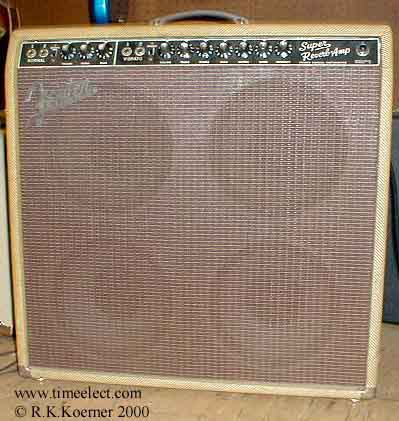
The first time I played my Strat through a Super Reverb, I knew I just had to have one. Then one day, a fellow came in the shop and was looking to buy sell or trade for a Twin Reverb or Pro Reverb. Well, I had the Pro Reverb he wanted, and the trade was done.It took some work to shape it up to look nice, and some parts replacements to get the sound tweaked real nice. NOS tubes do it every time!
As time went on customers would hear that Super Reverb while trying out their guitars when they picked them up. I started to get offers for the Super Reverb. Then I had weak moment to the temptation of a high offer and sold it.
When I turned around and saw the empty space on the floor, I knew I had done the wrong thing. I had repeated that same mistake five times more before I had learned my lesson. After going through one Concert and four Super Reverbs, I decided this was not going to happen again.
This last Super Reverb, which is pictured here, came from my friend Steve who found it out on the street in pieces on garbage day. I looked at the pile of what was a Super Reverb on the floor and felt this one was special.
The tolex was God awful ripped up. Missing were the speakers, baffle, back panels, tilt legs, corners, tubes, and a few parts from the amp. This Super Reverb needed some real help before it would be making any sounds.
After some thinking I decided this Super Reverb was not going to be leaving me because it's going to be my non-stock Super Super Reverb. An amp the collectors wound never be interested in. An Amp that takes what the Super Reverb known for, to the highest levels possible.
Well, here she is in all her splendor.
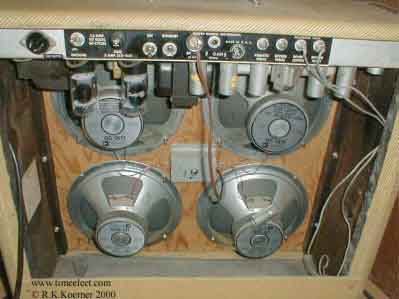
There are so many things wrong with her that she does everything, so right. I don't have to worry about any money offers of temptation anymore. The tweed runs the wrong way. The speakers and transformers are not stock. The tilt legs are missing. Hey, even the speakers are 15 ohms. What a perfect Super Reverb!!!
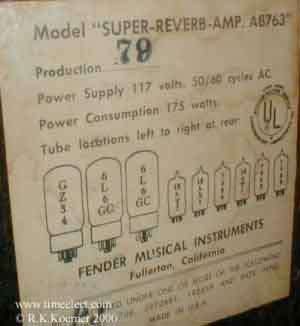
For those who want to know, here is her pedigree papers.

Here Eric uses Rich's Super Reverb for a special gig with the Spin Doctors, and John Popper.
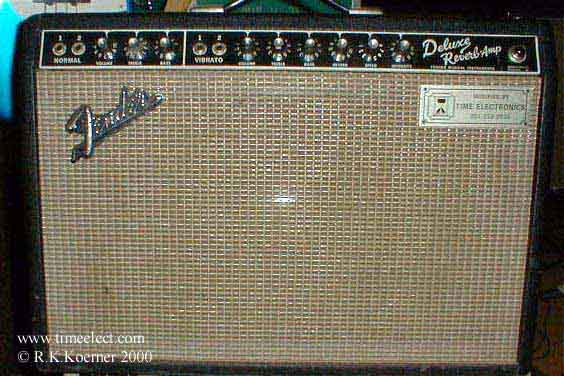
This is my first Deluxe Reverb. I had this mostly for a practice amp which worked out fine for practicing. But, for the casual jam or small gig, it needed a little help.
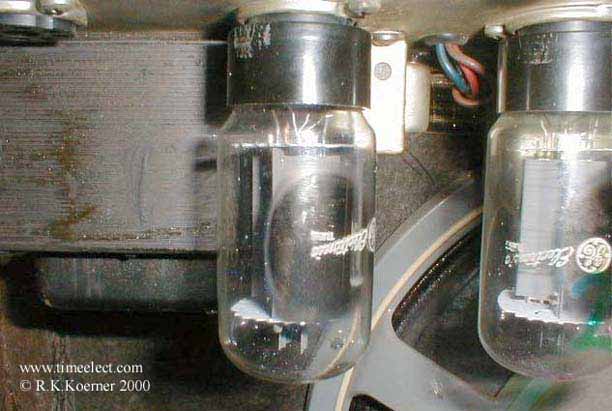
A change of transformers, output tubes, and speaker was the first changes this Deluxe went through. With a vintage presence control this amp was done. Now it was a gig worthy amp that cuts the mix. 36 watts R.M.S. is its highest output. I could have gone for more, but this is an amp for cranked tones, not killing people in front of the stage.
That killer amp from hell came later on.
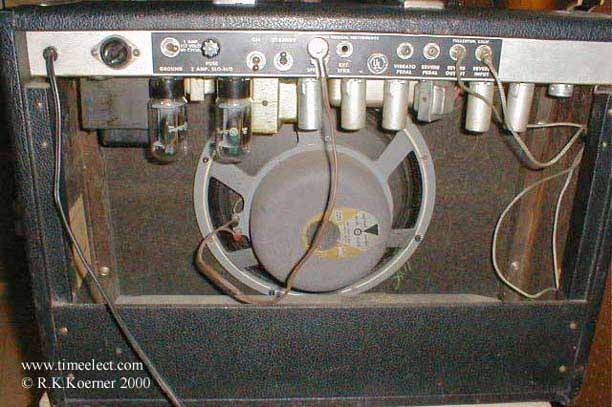
Yes, this is an old JBL D-120 that sits in this Deluxe Reverb. Its a large part of the magic that is in this amp. Below are the pedigree papers for this Deluxe Reverb.
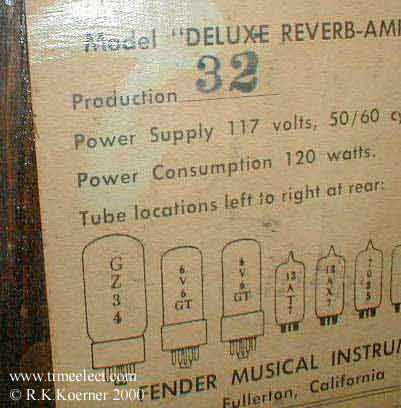
Considering the year is 1973 and you find yourself with this Deluxe Reverb, and a second one too. What do you think is the next project to take place?WARNING!!!!!!! This is not for the faint at heart.
If you are a vintage collector or vintage purist, click BACK in your browser right now!!!!!!
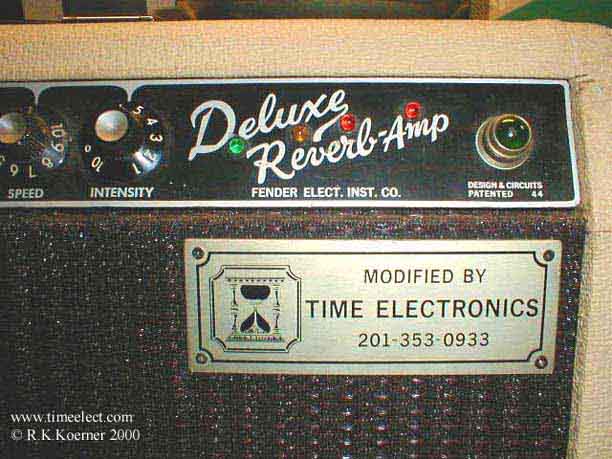
When it comes to my own personal gear, I have no interest in any of the politically correct views held by today's vintage collector or player. This amp was completed when no such thing existed. Deluxe Reverbs, as used amps, were common in every music store at this time.
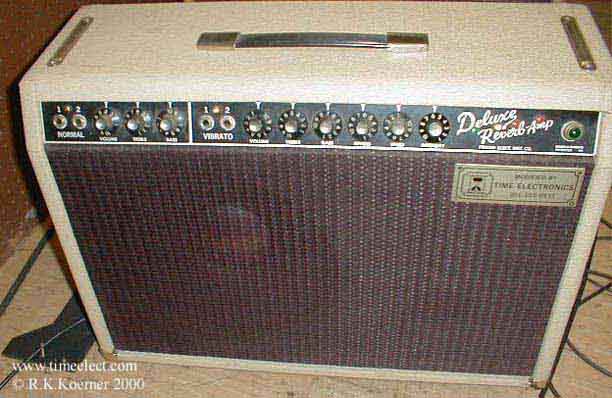
This, is the killer Deluxe Reverb from hell. To tell you everything that was done to this amp would take too much space typing it all. So, I'll just give some of the more important details. The LED's on the right are power indicators. Green indicates ten watts RMS, Yellow indicates 18 watts RMS, Amber indicates 25 watts, and Red indicates 100 watts RMS. They are there to tell you what the output stage is really doing. There is a high/low power supply switching circuit also employed.
In between each of the input jacks is also an LED that functions as a distortion indicator for the pre-amp stages. Knowing how to use the LED's tells you exactly what is going on in the amp when you dial in your sound. This Deluxe Reverb has more sounds in it, than you have heard before.
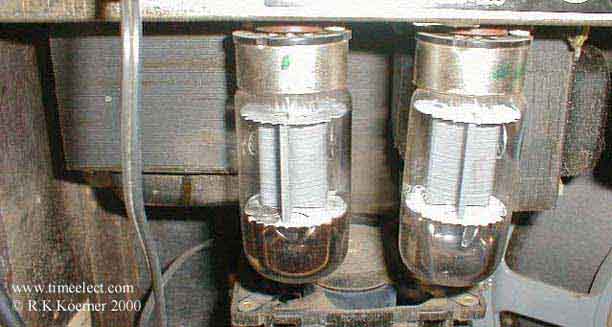
Here you can see that the 6V6-GTA's have been replaced with the GE-6550A for the output tubes. Notice the fan just below the 6550A's and the dust and dirt collected on the very large and heavy transformers.
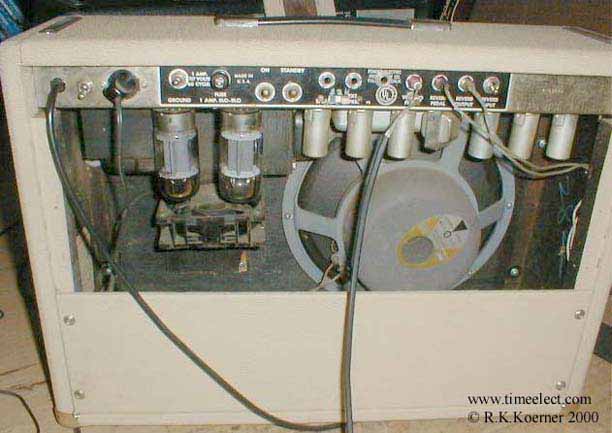
To gain clearance needed because of the large transformers, the twelve inch JBL D-120 had to be moved to the right a few inches. Yes, I know this is more amplifier than that JBL can take, and for that reason the switchable secondary impedances are employed.Using a two 15 JBL D-130 cabinet with this Deluxe Reverb amplifier is a most amazing thing!! Again, the pedigree papers are shown below.
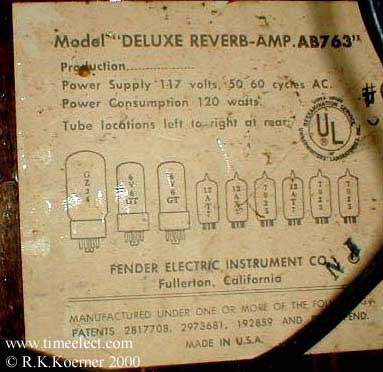
Here is one of two Marshalls I use for playing bass through. This one does more than 200 watts RMS. More on that later.
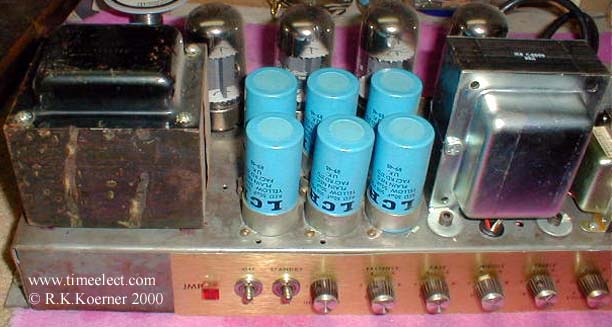
It was with this amp that I had found that a properly modified Marshall guitar amp can make the perfect *Slap* Bass amp. With some major changes in the EQ and increasing the power output for a real tight low end, this amp has impressed many tainted bass players when they found that my Jazz Bass was really runing thought this Marshall head sitting on the stage.Channel I of the amp still has all the great Marshall guitar sounds the amp left the factory with. Channel II has the treatment for the bass.
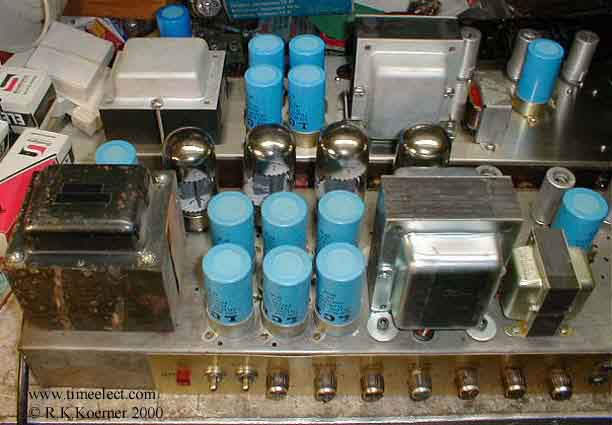
Compare the stock chassis to the one in the foreground. You can see the added filter caps and the increase in the size of the power transformer on the left side of the chassis. The core size of the transplanted power transformer is double the thickness of the original Marshall transformer.You can see, it was a tight fit.
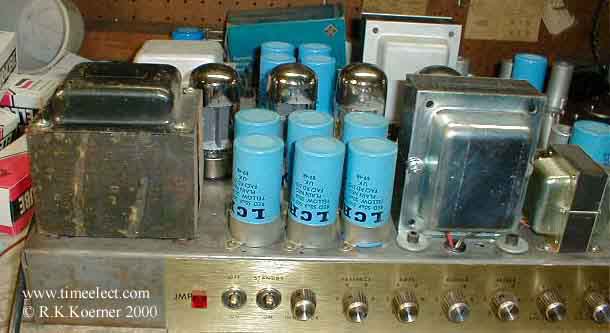
This Marshall was already doing over 150 watt before the modifacation was done. The stock 100 watt output transformer has held up to this kind of use for since early 1982. So far it's still hanging in there doing fine. Imagine that!
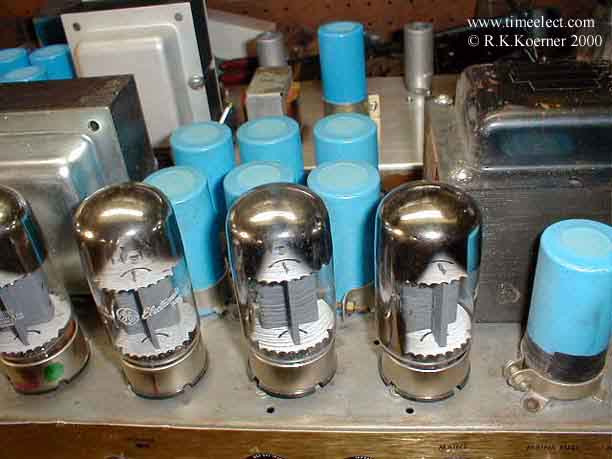
Only the GE-6550A output tube in this amp gives this high of an output.
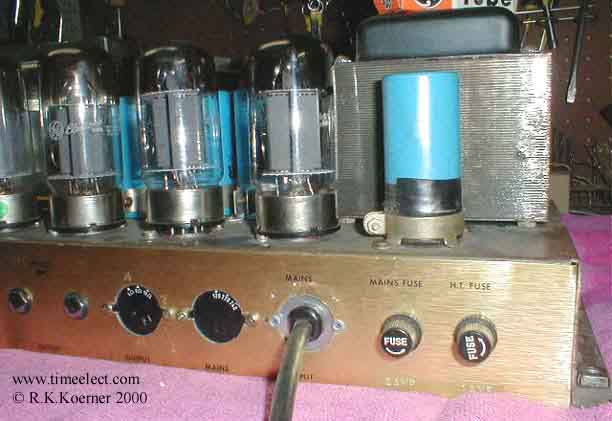
Yes, this is one of those old those Marshalls I talk about a lot.
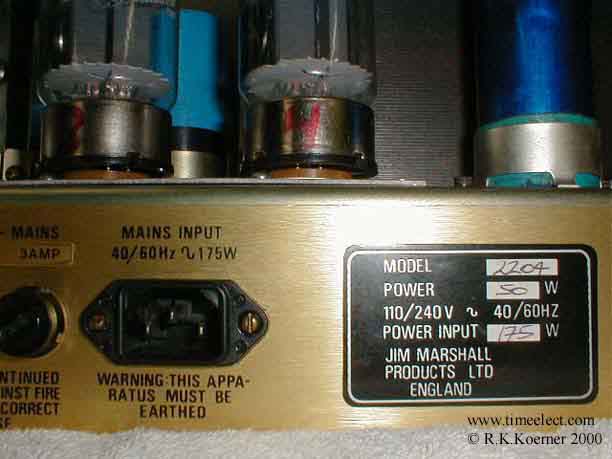
This next modified Marshall started out as a 50 watt 2204 model.
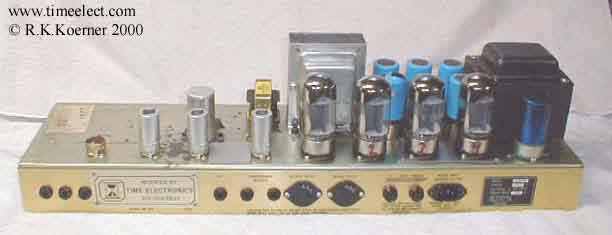
This Marshall 50 watt 2204, with it's printed circuit board, had to be totally stripped to be modified just like the JMP previously shown above to be used for a double head stack. The silent foot switching was also installed to shift the EQ and Gain to jump from Marcus Miller to Jack Bruce in one step on a foot switch.
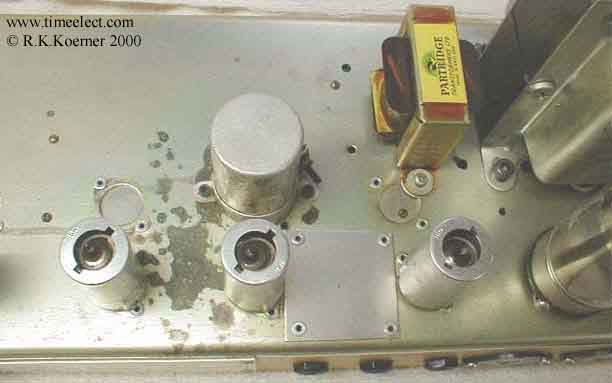
A lot of chassis work had to be done to the 2204 chassis to properly locate the chassis mounted components.
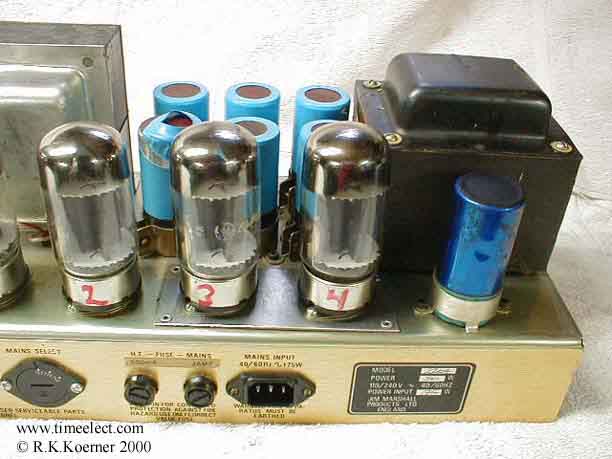
Again, a large transformer was installed to handle the higher power the Marshall is required to produce. Note the chassis modification need to position the output tubes.
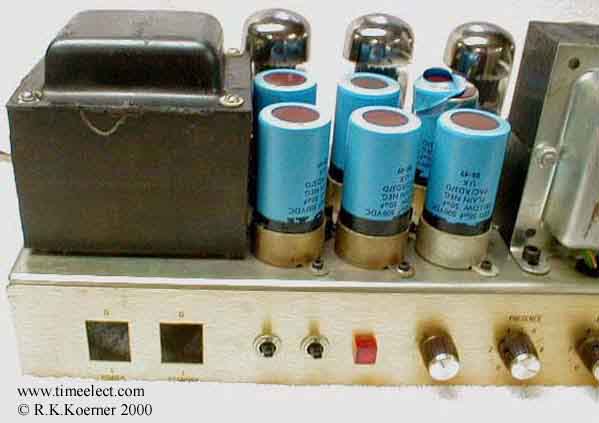
Addition power supply filters were also required for this Modification. Note the square holes at the left from the 2204 rocker switches. The front panel of the original JMP cabinet covers them from view.
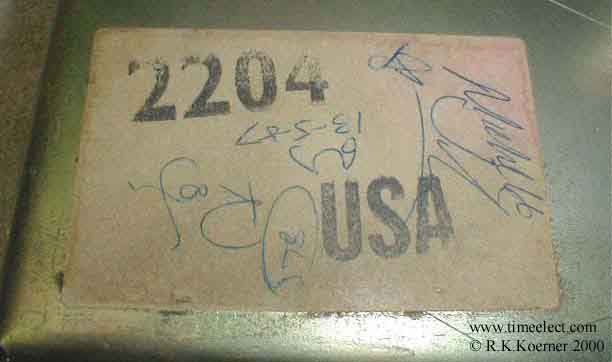
Yes, this is really a 2204 that is being Modified!!!!
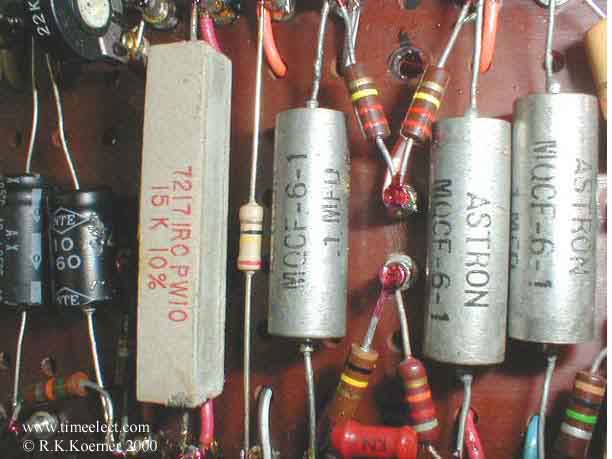
This is a close up the point to point circuit board that had to be made up for this Marshall's Modification.
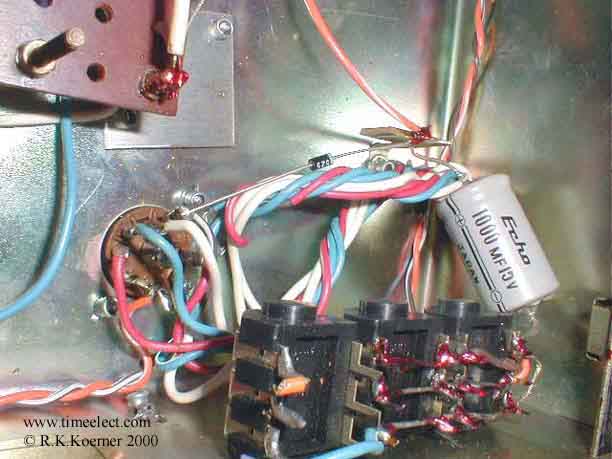
A view of the jacks used for the switching matrix for the multi-head channel switching with one foot pedal.
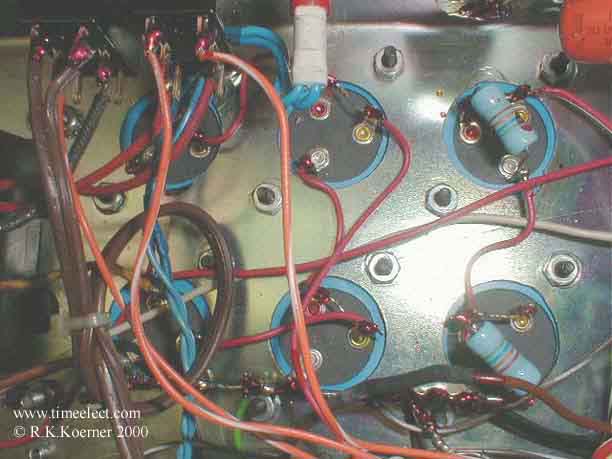
A view of the inside power supply section.
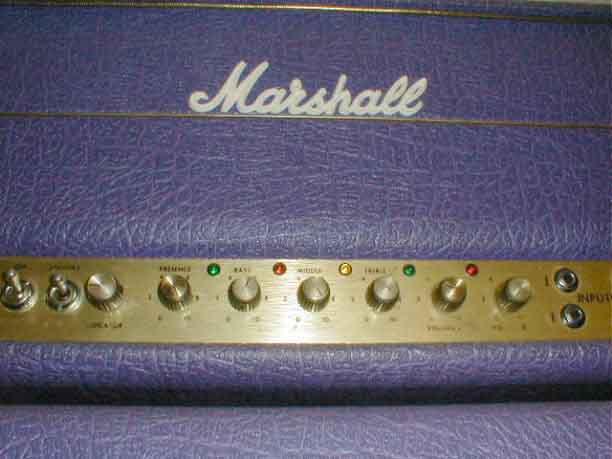
All Custom Work done on a One-On-One basis.
© Copyright R.K.Koerner 1997 All Rights
Reserved.
|